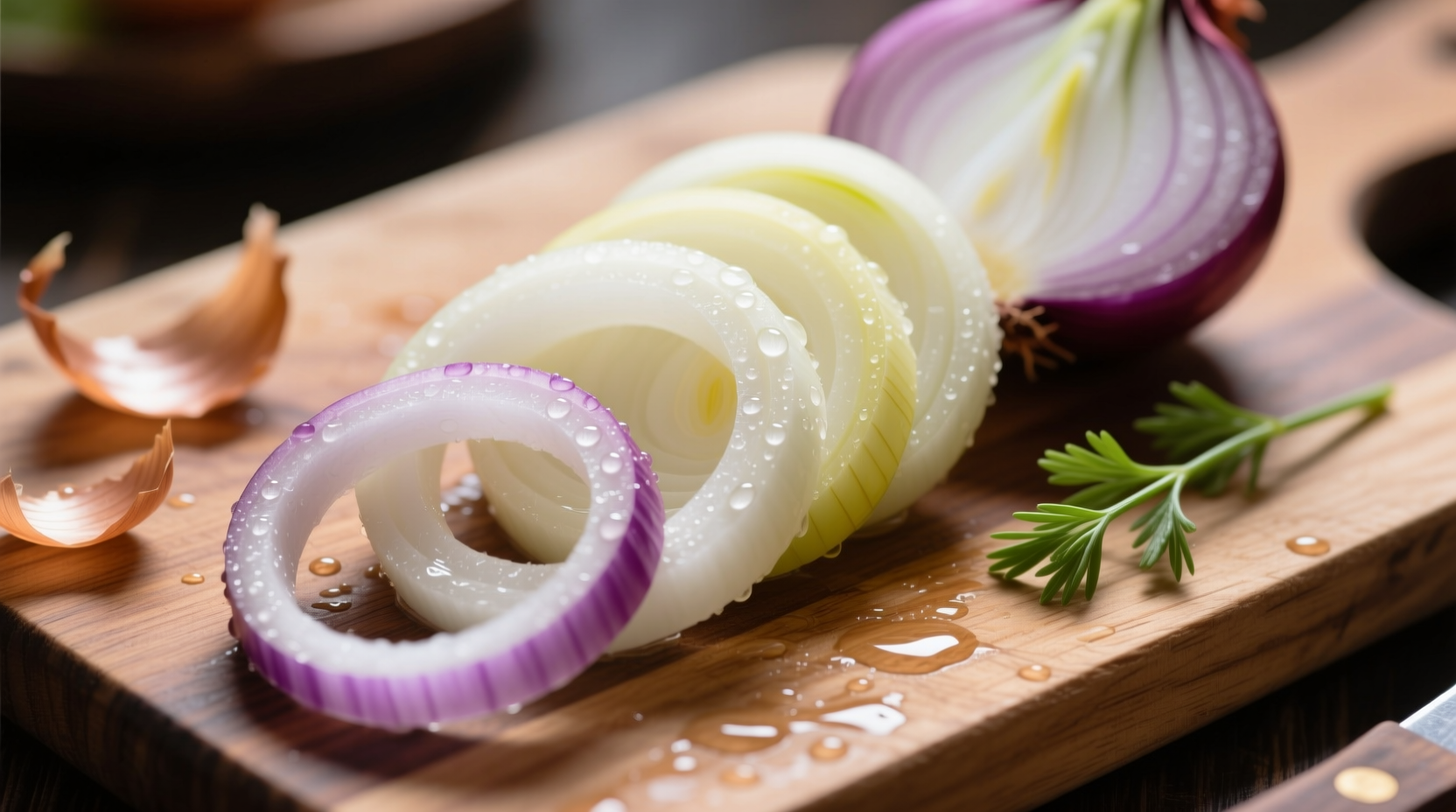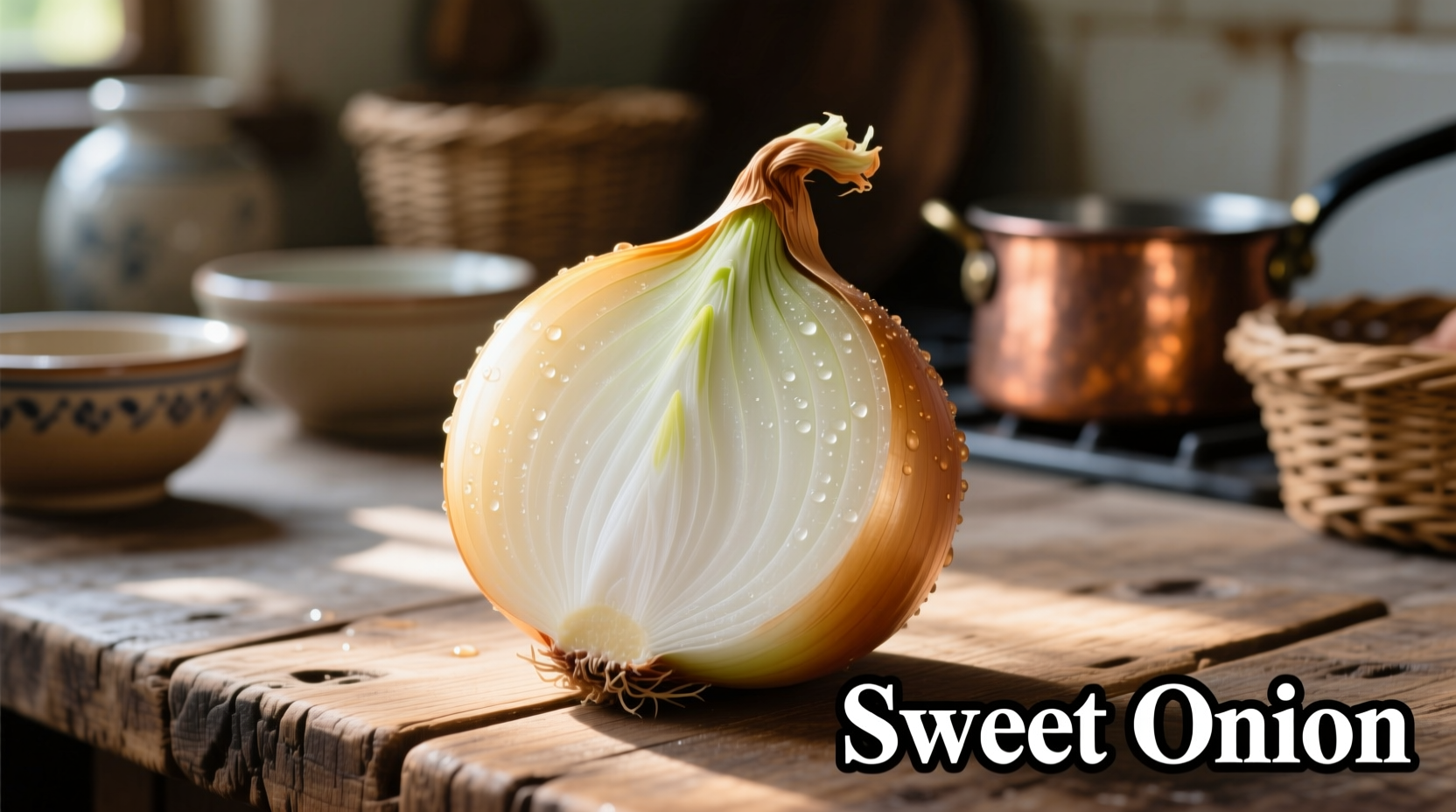Discover why sweet onions have become kitchen essentials for both professional chefs and home cooks. Unlike their pungent yellow or red counterparts, sweet onions deliver a delicate flavor that enhances dishes without overwhelming other ingredients. This comprehensive guide reveals exactly when and how to use these versatile alliums for maximum culinary impact.
What Makes an Onion "Sweet"?
The sweetness in onions comes from two key factors: higher natural sugar content and lower levels of sulfur compounds. While standard yellow onions contain about 4-5% sugar, sweet varieties typically reach 5-7% sugar content with significantly reduced pyruvic acid (the compound responsible for sharpness). This chemical profile creates a naturally milder taste that works beautifully in both raw and cooked applications.
According to agricultural research from the University of Georgia, soil composition plays a crucial role in developing sweetness. Sweet onions thrive in low-sulfur soils, which is why specific regions like Vidalia, Georgia produce such distinctive varieties. The unique combination of sandy soil and mild climate creates the perfect conditions for developing those characteristic sweet notes.
Sweet Onion Varieties Compared
| Variety | Season | Sugar Content | Best Uses | Storage Life |
|---|---|---|---|---|
| Vidalia | March-May | 5.5-6.5% | Raw applications, sandwiches | 2-3 weeks |
| Walla Walla | June-August | 5.0-6.0% | Caramelizing, grilling | 3-4 weeks |
| Maui | Year-round | 5.8-7.0% | Salsas, salads | 2-3 weeks |
| Texas Sweet | November-May | 5.2-6.2% | Cooking, roasting | 3-4 weeks |
Data sourced from the University of Georgia Agricultural Extension confirms these varieties maintain their distinctive sweetness due to specific growing conditions and harvest timing. Vidalia onions, protected by federal marketing order, can only be grown in 20 designated Georgia counties to preserve their unique characteristics.
Selecting & Storing Sweet Onions
When choosing sweet onions at the market, look for firm bulbs with dry, papery skins and no soft spots. The neck should be completely dry and closed. Unlike regular onions, sweet varieties have thinner skins and higher water content, making them more perishable.
For optimal storage, keep sweet onions in a cool, dark place with good air circulation. The USDA Food Safety and Inspection Service recommends storing them at 32-40°F (0-4°C) with 65-70% humidity. Never store sweet onions near potatoes, as the gases potatoes emit will cause onions to spoil faster. Properly stored, most sweet onions last 2-4 weeks, significantly less than regular storage onions.

Culinary Applications: When to Use Sweet Onions
Sweet onions shine in applications where their delicate flavor can be appreciated without cooking off their natural sugars. Understanding context boundaries helps maximize their potential:
- Raw applications: Perfect for salads, sandwiches, and garnishes where regular onions would be too sharp
- Caramelizing: Their higher sugar content creates deeper, richer caramelization with less bitterness
- Grilling: Hold their shape better than regular onions when grilled
- Limitation: Not ideal for long-simmered soups or stews where their delicate flavor gets lost
Chef Thomas Keller's culinary research demonstrates that sweet onions develop complex flavor compounds when caramelized slowly over low heat. The Maillard reaction creates over 500 different flavor compounds, explaining why properly caramelized sweet onions become kitchen gold.
Substituting Sweet Onions
When sweet onions aren't available, consider these alternatives based on your recipe's requirements:
- For raw applications: Use red onions soaked in cold water for 15 minutes to reduce sharpness
- For cooking: Yellow onions with 1 teaspoon sugar per onion can mimic some sweetness
- For grilling: Shallots offer similar texture with milder flavor
- For salsas: Leeks provide comparable mildness in raw preparations
Remember that no substitute perfectly replicates true sweet onions, as their unique chemical composition comes from specific growing conditions. The National Onion Association notes that attempting to create "sweet onions" by adding sugar to regular onions doesn't replicate the complex flavor profile of genuine varieties.
Nutritional Profile
Sweet onions provide similar nutritional benefits to other onion varieties but with slightly higher natural sugars. A medium sweet onion (110g) contains:
- 43 calories
- 10g carbohydrates (including 5g natural sugars)
- 2g fiber
- 10% of daily vitamin C needs
- Significant quercetin and other antioxidants
Research published in the National Center for Biotechnology Information shows that onions' antioxidant content remains stable even when cooked, making sweet onions both flavorful and health-promoting additions to your diet.
Frequently Asked Questions
Can you substitute sweet onions for yellow onions in recipes?
Yes, but with considerations. Sweet onions work well in place of yellow onions for caramelizing, grilling, or raw applications. However, for long-cooked dishes like soups or stews, yellow onions provide better flavor depth as sweet onions' delicate flavors disappear during extended cooking.
Why are sweet onions more expensive than regular onions?
Sweet onions command higher prices due to their limited growing regions, shorter harvest seasons, and more delicate nature requiring careful handling. Varieties like Vidalia are protected by federal marketing orders that restrict production to specific regions, creating supply constraints that affect pricing.
How can you reduce the sharpness of regular onions to mimic sweet onions?
Soak sliced yellow or red onions in cold water for 15-20 minutes to remove some sulfur compounds. For cooking applications, adding 1 teaspoon of sugar per onion during caramelization can enhance sweetness, though it won't replicate the complex flavor profile of true sweet onion varieties.
Do sweet onions have the same health benefits as regular onions?
Sweet onions provide similar antioxidant and anti-inflammatory benefits as other onions, though with slightly higher natural sugar content. All onions contain quercetin and other beneficial compounds that remain stable during cooking, making sweet onions both flavorful and health-promoting additions to your diet.











 浙公网安备
33010002000092号
浙公网安备
33010002000092号 浙B2-20120091-4
浙B2-20120091-4